This one is a bit long (okay, they’re all a bit long). I’ve divided it into three main parts. The first describes the problem Canada has turned into, both for its own people, and for its Southern neighbour. The second explains the motivation behind what is apparently the new president’s favoured solution: annexation. The third part lays out how this might be accomplished relatively bloodlessly by precipitating a colour revolution.
I. A nasty problem on America’s northern frontier
Canada and the US have been frenemies for most of the last two hundred years. With the exception of some spats in the 19th century, they’ve fought on the same side in all major wars, and haven’t taken up arms against one another. At the same time, Canada has from the very beginning fiercely guarded its independence. Through the 1950s, this came from Canada’s self-conception as an outpost of sober, orderly British traditionalism, in stark contrast to the chaotic liberal revolutionaries across the border. Following the Liberal Party’s cultural revolution in the 1960s, Canada increasingly came to see itself as different from the US primarily in that it was more liberal, in the modern sense, than it’s Bible-thumping, gun-toting redneck cousins – which is to say more socialist, leftist, multicultural, gay-friendly, internationalist, feminist, and so forth. In fairness to Canada, the British government, having long-since fallen under the sway of the Labour party, had followed the same ideological trajectory, so Canada was really just taking its cue from Mother England as it always had. In further fairness to Canada, all of this has been aggressively pushed by Blue America, which has been running American culture (and therefore everyone else’s) until about five minutes ago.
Despite these differences, the US could always rely on Canada being a stable, competently run, prosperous, and happy neighbour – perhaps a bit on the prickly side, given the inferiority complex, but much less of a headache than the entropic narcostate to the south that keeps sending its masses of illiterate campesinos flooding over the banks of the Rio Grande. Canada might be annoying sometimes, but it didn’t cause problems. To the contrary, Canada and the US have maintained one the world’s most productive trading relationships for years: America gets Canadian oil, minerals, lumber, and Canada gets US dollars, technology, and culture.
Now, however, Canada has become a problem for America. Not yet, perhaps, the biggest problem – America has a very large number of extremely pressing problems – but a significant one nonetheless, with the potential to become quite acute in the near future.
The problem is that Canada has become a security threat.
Canada is not a security threat in the military sense. Indeed, that’s part of the problem. The Canadian Armed Forces has become so demoralized, weak, and enfaggoted by decades of systematic underfunding and leftist social engineering that what was once, man for man, one of the toughest armed forces on the planet is now a shambolic collection of obese CAFamites under the command of schoolmarms with pronoun hair. If the US wanted to conquer Canada by armed force, it could do so in a day – send a tank battalion to cut off the highway connections between Toronto and Montreal, drop some Green Berets into Ottawa to take parliament into custody, and that would be that. The problem is that Canada’s weak military also means that it cannot defend the arctic against Russian or Chinese incursions, thereby dropping the defence of North America’s northern frontier into the overstretched arms of the US military.
It does not stop at a weak military. Canada’s government has also been deeply penetrated by foreign adversaries, China and India in particular. An intelligence report found that numerous Canadian members of parliament are acting as de facto agents of foreign influence, both in terms of participation in election meddling by foreign powers, and in terms of feeding those powers intelligence. The names of these traitors have not been released, probably because none of them are actually Canadians. Naturally, the Canadian government investigated itself, and as it invariably does, found itself to be quite spotlessly clean, which is quite reassuring. It just isn’t reassuring to Canada’s nominal allies, who have become leery of intelligence sharing with Canada.
The next security problem is the border, an issue which Trump has repeatedly stressed as a justification for tariffs. The 49th Parallel is famously the longest undefended border on the planet. It is much longer than the Southern border; there are no barbed wire border fences; most of the terrain is easily traversed – forest, lake, or prairie – in contrast to the punishing desert running across the US-Mexico border. Militarizing the US-Mexico border is already a huge, costly undertaking. Doing the same on the Canadian border would be vastly more challenging.
Canada’s extraordinarily lax immigration policy has, in recent years, led to a much higher encounter rate at border crossings with suspects on the terrorism watch list. These people come into Canada legally, part of the millions of immigrants Ottawa has been importing, every year, for the last few years. When you’re bringing in over one percent of your country’s population every single year, it is simply not possible to properly vet them, and it seems that Ottawa barely even bothers to try. Given that not every such person of interest will get stopped at the border, and that not every terrorist is on a watch list, one wonders how many enemies have already slipped across into the US by way of Canadian airports.
The second border problem is fentanyl. Like the US, Canada has a raging opiod epidemic. We’ve got tent cities, zombies in the streets, needles in the parks, and this is not limited to the big cities – it spills out into the small towns, as well. Like Mexico, Canada has fentanyl laboratories. Precursor chemicals are imported from China by triads, turned into chemical weapons in Canadian labs, and then distributed within Canadian and American markets by predominantly Indian truckers. The occasional busts have turned up vast quantities of the stuff, but have resulted in very few arrests. The proceeds are then laundered through casinos or fake colleges, with the laundered cash then parked in Canadian real estate. There are estimates that the volume of fentanyl money flowing through Canada’s housing markets is significant enough to be a major factor (immigration is certainly the main factor) distorting real estate prices – keeping the housing bubble inflated, propping up Canada’s sagging economy, and pricing young Canadians out of any hope of owning a home or, for that matter, even renting an apartment without a roommate or three.
It’s generally understood, though essentially never acknowledged at official levels, that poisoning North America with opiods is deliberate Chinese policy, both as revenge for the Opium Wars of the 19th century, and as one element in their strategy of unrestricted warfare i.e. the covert but systematic weaponization of every point of contact – economic, industrial, cultural, etc. – between Chinese and Western societies. By allowing the fentanyl trade to continue, the Canadian government is complicit in an act of covert war being waged by a foreign power, one whose casualties include the Canadian government’s own population.
This brings us to the penultimate, and really the crucial, problem, which is that the Canadian political system is in the hands of America’s enemies. This characterization is not confined to Justin Trudeau, or even to the Liberal Party of which he is no longer leader (though for now he remains prime minister). It is a universal across Canada’s political class. The leader of the New Democratic Party, Canada’s socialists, is a Sikh, and a Khalistani nationalist. The Greens are, as Greens everywhere, watermelons – environmental conservationists on the outside, communists on the inside. Even the Conservative Party are committed neoliberal globalists with a deep and abiding affection for mass third world immigration.
Canada’s political class share all of the enthusiasms of Blue America, as do the ‘presidents’ and ‘prime ministers’ of the various European satrapies. They are all are essentially the branch managers for the local franchises of the worldwide socioeconomic engineering project generally understood by its detractors as ‘globalism’. Globalism is the enemy of America specifically, and the West more broadly. MAGA – which is essentially the loose coalition of Americans who for various reasons prefer not to destroy the West more broadly, and America specifically – has recently staged a hostile takeover of the political nerve centre of globalism within the USA, but the globalists remain entrenched throughout the imperial provinces. Very much including Canada.
It should be stressed that none of this is working out at all well for Canadian citizens. They’ve endured a lost decade of wage growth under the Trudeau regime, which has occurred at the same time that housing prices have skyrocketed due to the aforementioned money laundering as well as what may be the world’s highest rate of immigration (recently reaching a few percent of the population, annually), leaving Canadians one of the most indebted population’s on the planet.
The birth rate has cratered, reaching a total fertility rate of 1.2 live births per woman, even lower than Europe; the number is almost certainly even worse if only native births are considered, as immigrants tend to have larger families. This fertility collapse is due to wages flattened by immigrant labour, unaffordable housing, and also a sex ratio which is suddenly one of the most skewed in the world, with an excess male population of about 10% (that excess being entirely composed of imports). This excellent essay at Aporia presents these problems in more detail:
As a result of these multitudinous troubles, Canada’s governing class is not popular. For years now, all across the country Canadians have defiantly hoisted the black flag of Fuck Trudeau as precursor to their intent to start slitting political throats the next time they’re allowed to vote. Such vulgarity is unheard of in Canadian politics. It takes a great deal for Canadians to be impolite.
However, this widespread dissatisfaction has so far failed to coalesce into any meaningful populist insurgency opposing the Laurentian elite. Until recently, the leader of Canada’s Conservative Party, Pierre Poilievre, was coasting towards an easy electoral landslide on the back of this simmering popular anger, with his primary and indeed only selling point being that he is not Justin Trudeau. That is not to say that he is terribly different from Justin Trudeau. For American readers, Poilievre can be best described as vaguely reminiscent of Pete Buttigieg, with politics a hair to the right of the left of the right of Buttigieg’s left.
On a policy level the Conservatives are practically identical to the liberals; indeed, on immigration, after the LPC was forced by overwhelming weight of public opinion to slightly reduce the rate at which they lavished student visas and temporary foreign worker visas on their clients, Poilievre’s Conservatives essentially allowed the Liberals to outflank them to the right on the immigration issue, despite mass deportations being a very clear electoral winner.
Only very recently did Poilievre finally pledge to reduce immigration to ‘only’ a quarter of a million a year ... still a far cry from the clear necessity to reverse the flood that Trudeau and the rest of his World Economic Forum Young Global Leader alumni unleashed on the country.
It now appears likely that Trudeau will be replaced as head of the Liberal Party by Mark Carney, a central banker and committed globalist. It also appears quite plausible that the Conservatives will squander their electoral lead, possibly resulting in Carney winning the next election1.
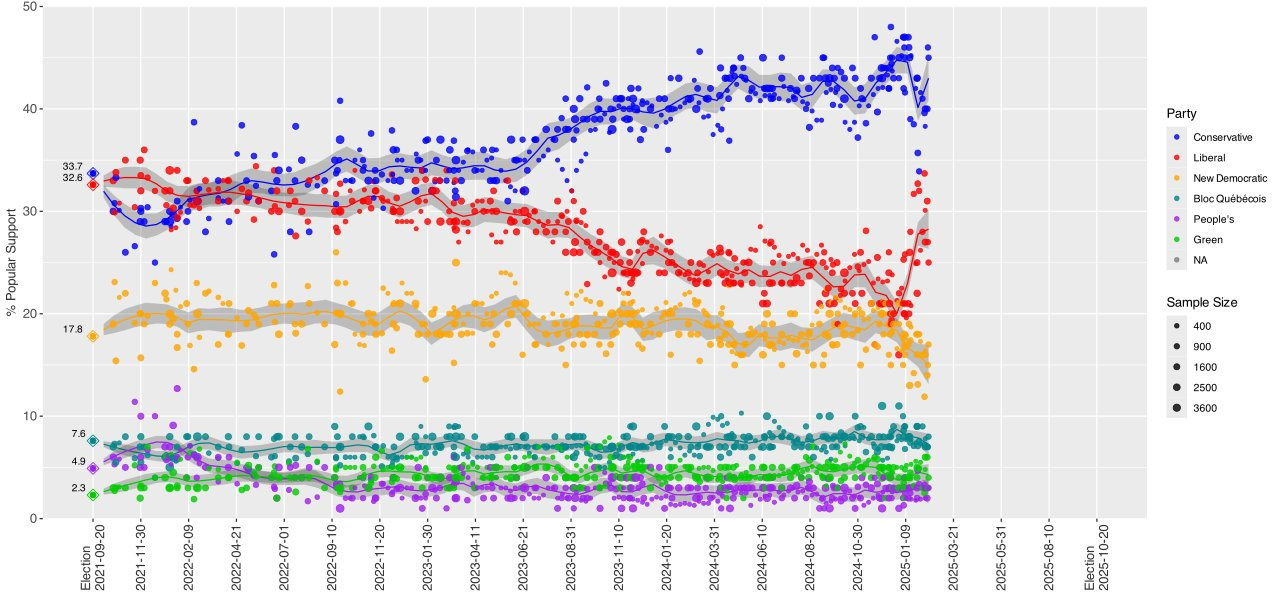
The closest Canada has to a populist anti-immigration movement is Maxime Bernier’s People’s Party of Canada. Bernier was a close favourite to win the Conservative leadership contest about a decade ago, but was sidelined by shady party shenanigans in favour of some ineffectual nonentity no one remembers now. Rather than accept the humiliation, he left the party and started his own, with blackjack and hookers.
Okay I’m joking about the hookers (although Mad Max’s ex-girlfriend was apparently connected to the Hell’s Angels). In any case, the People’s Party’s strongly libertarian leanings have completely failed to connect with voters. To date, the PPC has not taken a single seat in parliament, and have not cracked low single digits in polling, as can be seen in the graph above. This despite the PPC being the only party to take a firm – and extremely popular – anti-immigration stance. The party’s novelty doesn’t fully explain this. It’s been around longer than Britain’s Reform Party, for example, which snapped up several seats in the last UK general. I suspect the PPC languishes because most conservative voters assume – very incorrectly – that the CPC will solve the immigration problem. Indeed I’ve had several conversations in which my interlocutor hallucinated that the CPC had taken a strong stance against immigration.
The PPC is of course also subjected to the same relentless demonization – racist, xenophobic, far-right, Nazi, you all know the litany – that every populist party faces. In Canada this bites deeper than it does in other countries, because the Canadian media is probably one of the most controlled in the formerly free world, and the Canadian people deeply brainwashed. The legacy media is directly subsidized by the federal government, meaning that even the so-called ‘free’ press is essentially state-controlled media. This gives the Canadian establishment a considerable edge in sidelining opposition. Personally, I suspect the main reason that the PPC has so far failed to make a dent in the Canadian political landscape is that libertarianism simply doesn’t connect with Canadian voters. Canadians are not libertarians; they are instinctively authoritarian, and always have been.
Regardless of the reason, as it stands there’s no realistic possibility of a populist insurgency forming a majority – or even a minority – government in a reasonable time-frame. It is all but assured that control of the Canadian government will pass from the grubby hands of one group of tawdry little globalists to the clutching paws of another, which will happen whether the Liberals or the Conservatives win the next election.
For America, for MAGA, for Trump, this is a pressing strategic concern. They are engaged in nothing short of a revolutionary overthrow of the managerial regime that has subverted, gaslit, and plundered the United States since FDR, and for their project to succeed it is utterly crucial that the enemy’s power centres, both internal and external, be neutralized. Canada is a particularly high priority due to the expansive undefended border, and the vast volume of trade that crosses it. While America could probably weather interruption of the flow of natural resources coming down from the Canadian north, it would be a complicating factor, and a coven of globalist stooges wielding Canada’s trade goods as a weapon is not a complication the new regime wants.
America needs, as a minimum condition, a trustworthy and stable ally guarding its northern frontier. As things stand, it does not have that. Nor is it likely to get that any time soon.
So, wat do?
II. Manifest Destiny and the Monroe Doctrine
If Canada needs regime change, and Canada cannot achieve regime change internally, the obvious answer is to impose regime change. Either circulate the elites, such that a friendly albeit still nominally independent regime comes to power, or simply annex the country outright.
Annexation is far more complex than just bullying Ottawa into becoming a compliant, well-behaved vassal state again. But it is also a unified application of two core American principles: Manifest Destiny, and the Monroe Doctrine.
The Monroe Doctrine holds that no foreign power can be allowed to gain a foothold in the Western hemisphere, which must remain the exclusive imperial backyard of the United States. This was what motivated the steady expulsion of the Spanish and Portuguese empires from Latin America and Brazil, and what motivated the US to gradually peel Canada away from the influence of its OG nemesis the British Empire. By deliberately turning itself into the catspaw of China and India, Canada places itself in direct violation of the Monroe Doctrine.
Manifest Destiny is the notion that white Americans had been given North America by Providence, and that it was both a historical inevitability and sacred duty to settle the entirety of the continent, establishing an Anglo Empire spanning from the Atlantic to the Pacific, and from the Gulf of Mexico America to the Arctic Ocean. Inspired by this sense of divine mission, once unleashed from the restraining hand of London, Americans broke free from their confines on the East Coast and sent waves of settlers rushing west to push all the way to the Pacific in a few short, tumultuous decades.
Canada has been an obstacle to Manifest Destiny from the very beginning, but after a short-lived attempt to seize British North America by force in the War of 1812, Washington decided to let well enough be. Canada might not be formally part of the American Empire, but it is – or was – overwhelmingly settled by Anglos virtually indistinguishable from Americans. “Close enough,” the Americans shrugged, and carried on with the second phase of their empire-building, evolving from an inland tellurocracy to a global maritime imperium, recapitulating in two hundred years an evolution that took their Anglo-Saxon forebears a thousand.
Just because Washington was mostly satisfied with the status quo does not mean that the old ambition of a single, unified, continental Anglo fortress-state was dead. And indeed, it seems that Trump has pulled Manifest Destiny out of the back drawer, blown the dust off of the Monroe Doctrine, and thrown them both down on the desk in the Oval Office.
Considered dispassionately, the United States has never had a better opportunity to annex Canada, and such an opportunity may never come again. Canada is broke and defenceless. The Canadian people are angry and demoralized. The weak Canadian government elicits contempt from every Canadian who does not work for it. Culturally, the country is completely deracinated, thanks entirely to the Canadian government’s own deliberate policy, which has for sixty years been to systematically erase Canadian identity. Indeed, sixty years ago to the very day that this is being published, the Red Ensign flag that bore the coat of arms displaying Canada’s ethnic heritage was replaced with the empty corporate logo of the maple leaf; in that sense, February 15th can be seen as the grim anniversary of the beginning of Canada’s end. Never before has Canada been so helpless; never before have Canadians been so disenchanted; never before have Canadians had less to fight for; never before has the Great White North been more ripe for the plucking.
Thus Trump, gloryhound that he is, with a nose for weakness and a taste for opportunity, has decided to pluck the prize that has been all but tossed at his feet. If he does so, not only does he shore up American national security, but he becomes the president who finally completed the grand project of Manifest Destiny by consolidating the entirety of North America under one flag. That’s the kind of thing they carve your face onto mountains for.
What follows is neither prediction nor prophecy. Nor, I emphasize, is it advocacy. It is simply what I would do, if I was America, and faced with both the necessity of solving the Canada problem, and offered the opportunity that problem presents on a silver platter. Obviously this is all speculation. I don’t know for sure that this is what the Trump administration is doing. However, it seems very clear that they are doing something – that there is a plan unfolding. Perhaps this is what that plan looks like.
Before we get to the fun part, I’m going to interrupt the flow of this essay to remind you that it was written by an actual human being, whose primary source of income is the generosity of his readers. You don’t have to pay to read this, I put all of my essays out there for free, because after all I want people to read them. That’s sort of the point. But still, things like food and a roof over my head are, you know, nice to have. So if you can’t pay or really, really just don’t want to, that’s fine, you know, I won’t hold it against you. Only a very tiny fraction of my readers chip in to become supporters. It’s an exclusive club, which comes with the profound emotional benefit of knowing that you, the aristocratic patron, are making it possible for the people in the cheap seats to enjoy the show.
And now, on with the show.
III. Maple Maidan
Step 0: The Opening Act
This is where we are now. It’s setting the scene, preparing the mark. Trump throws around apparently outrageous and seemingly lunatic statements about making Canada the 51st state, and threatens the country with crippling tariffs. This immediately gets everyone’s attention – most especially that of the Laurentian elite, who know full well that Canadian annexation would mean the end of their cozy little abusive relationship with the captive people they’re smothering to death with imported scab labour and real estate scams. The Laurentian elite get baited into beating their chests with the Canadian flag that only a short time before they flew at half mast in performative paroxysms of ethnomasochistic shame over their made-up story about the evidence-free genocide at the residential schools, proclaiming their eternal patriotic loyalty for a post-national economic zone with no core identity, and promising retaliatory tariffs that will further impoverish the already immiserated Canadian people.
In short, the Canadian political class are made to look quite ridiculous.
Initially of course the Canadian people – propagandized for generations to hate Americans, because post-national Canadians only really define themselves as being Not-Americans – will eat it right up, but after all, they have to say they’re not interested in Trump’s offer. It’s the old joke about the difference between a politician and a lady: if a politician says yes he means maybe, if he says maybe he means no, and if he says no he’s no politician; if a lady says no she means maybe, if she says maybe she means yes, and if she says yes she’s no lady.
So as we open the game, the Canadian public are vociferously opposed to political union with their ancient southern frenemy. Three quarters of young Canadians ‘would never vote to become part of the United States’.
But take a closer look at those numbers. The bottom question, in particular, is revealing. Sweeten the deal by letting Canadians transfer all of their loonie-denominated assets into greenbacks on a one-for-one basis, and the 23% of young Canadians who would vote to join the US in the first question almost doubles to 43%. From Trump’s perspective, that says it all. We’re just playing hard to get; we are haggling, as the old joke has it, over the price. What’s that line of Trump’s? Something about grabbing them by the beaver?
Step 1: Imposition of Tariffs
The tariffs put immediate and devastating stress on Canada’s already shaky economy. The weak Canadian dollar drops, making imports more expensive. Canadian exports to the US all but cease, producing mild economic distress in the US but catastrophically hollowing out the Canadian economy.
In the short run, this produces a wave of intensified anti-American sentiment, which is capitalized upon by Canadian political leaders seeking to get the Canadian population to rally around the flag. With luck, Canadian politicians can be baited into deploying counter-tariffs on US imports, which will have very little impact on the American economy, but further devastate the Canadian economy by driving prices even higher.
Step 2: Psychological Operations
This isn’t so much a sequential step as a second, and crucial, prong of the attack (indeed it starts before the tariffs even kick in). Trump formally offers Canada entry into the US as one (or perhaps multiple) states, with full voting rights, US passports, protection of the US constitution, maybe even conversion of assets, etc.
This is of course rejected out of hand by Canadian political leaders, who have a good thing going, and it is initially rejected by a majority of Canadians, who have only bad things going, but have their pride to consider.
However, the economic crisis is powerful argument. Canadians are defaulting on their mortgages, homelessness is increasing, people are going hungry. Therefore, alternative proposals are put forward in the Canadian media, such as closer trading ties with China, or even joining the EU ... an idea which was floated last month by the Economist.
Why giving up Canada’s sovereignty to the unelected European Commission across the ocean in Brussels should be preferable to giving up its sovereignty to the United States is not, of course, immediately obvious, and the very fact that this option is being publicly considered undermines the case being made by Canada’s no-core-identitarian post-nationalists that they really care about Canadian sovereignty, man.
While Ottawa flounders about and makes itself look silly, the US launches a full-spectrum propaganda assault, principally via social media platforms. This assault proceeds across multiple narrative attack vectors, with the goal of delegitimizing the Canadian state by emphasizing its multiple failures to safeguard the interests of the Canadian people, e.g. the policy of replacement migration, the housing crisis, the deplorable state of the military, the rampant corruption, the high taxes, the failure to properly develop resources, infiltration of the government by hostile foreign adversaries, and so on (they’re really spoiled for choice here). The overall message is that the Laurentian elite are corrupt, lazy, and even traitorous; that they are holding the Canadian people hostage; that they are the tools of foreign powers. “Why do your leaders tell you to hate us, your brothers, and instead make common cause with aliens from distant lands, with whom you have nothing in common? Whose side are they really on?”
The anti-government messaging is reinforced by a ‘cyber-attack’ upon Canadian government archives, which subjects large parts of them to an AI-driven network-tracing audit which uncovers unmistakable signs of extensive corruption. Think DOGE without enforcement powers, engaged in purely as a propaganda exercise.
The blistering attack upon the Laurentian elite’s legitimacy is accompanied by a clearly articulated positive vision: the opportunities that will open to Canadians as American citizens, the possibilities for development that come with an integrated North American fortress state, the settlement of the northern frontier, etc. Once again, this leaves the Laurentian elite flatfooted, as their only vision for Canada is the ‘Canada 2100’ plan: a largely Indian population of 100 million by the year 2100, living like cockroaches in megacities huddling up against the American border for warmth, presided over by a total state that swallows the sclerotic economy and micromanages every detail of everyone’s miserable daily urban peasant life. Not that they’ve bothered to articulate this vision to the Canadian people, many of whom don’t even know about it ... but this unspeakable horror really is all they have. And of course, this will be pointed out, too.
Step 3: Boiling Over
A ‘spontaneous’ call for a referendum on joining the US emerges on social media. This is taken up enthusiastically by many Canadians, but also of course rejected out of hand by the Canadian government and its domestic supporters.
The Canadian population, stressed by the economic crisis, splits down the middle. Some – particularly older Canadians, and those who work for the government – blame the Americans, and consider those who blame Ottawa to be traitors to the Canadian state; others blame Ottawa, who they consider traitors to the Canadian people.
It does not go unnoticed that the factions have a definite racial valence. Pro-union and anti-government forces are overwhelmingly heritage Canadians, for whom the government’s immigration policies are the major secondary issue, only recently (post-tariffs) eclipsed by the economy. Pro-government factions consist of both white Canadians and immigrant populations. The latter do not care so much one way or the other about Canadian sovereignty, as they are in no way Canadian; they simply want to keep immigration high and to maintain the existing DEI ethnic preference structure, and they intuit that the new sheriff in Washington will not be so accommodating as their existing patrons in Ottawa. The alliance between immigrant and pro-government white Canadians is additional fuel for the pro-union white Canadians to consider their opponents traitors, as they manifestly prefer allegiance with hostile foreigners over friendship with their brothers. Pro-government forces, by contrast, characterize union supporters as retrograde racists who are also traitors working for a foreign power.
Until recently filled to bursting, Toronto begins to empty out. Many recent arrivals abandon the uncertain turmoil gripping Canada for their home countries, collapsing the real estate market in the process. With them go the last tattered shreds of plausibility clinging to the long-standing official narrative that new Canadians are just as Canadian as everyone else.
Rallies and counter-rallies for one faction or another begin to pop off in cities all over the country. The government, panicking, tries shutting down Xwitter and other social media; it freezes the bank accounts of dissidents; anti-government protests are attacked by both riot police and pro-government factions, to whom the police turn a blind eye.
Inevitably, and essentially instantaneously, footage of the Canadian government’s heavy-handed tactics reaches the Internet. American popular opinion is galvanized: their Canadian brothers and sisters are being held hostage by a tyrannical, abusive regime, and they need to be liberated as a matter of urgent moral necessity. Republican senators begin to make noises about military intervention, to a chorus of great enthusiasm on social media, further panicking Ottawa. Volunteer militias begin spontaneously forming in the US, heading up to assist their beleaguered pro-union brethren; the Canadian government of course tries to prevent their entrance, leading to standoffs and clashes on the border.
Step 4: Fragmentation
The divided Canadian body politic begins to crack along long-standing geocultural fault-lines.
Alberta, which has for decades felt that it was being plundered by Ontario and Quebec, declares its independence, and applies to the US for membership.
Annoyed that Alberta beat it to the punch, Quebec splits away soon after, declaring itself to be a sovereign republic.
Now geographically severed from Canada, never too fond of Eastern Canada at the best of times, but not well-disposed towards the US, either, British Colombia opens negotiations with Alberta, proposing the alternative of joining them as a new country rather than becoming a state. Simultaneously a movement begins in Vancouver to declare itself as an independent city-state, similar to Hong Kong (from which many of its residents originate) or Singapore.
Cut off from Ontario by Quebec’s secession, and with no prospect of forming a viable country of their own, the maritime provinces also announce their intent to apply for statehood.
In the mood of mass hysteria sweeping the country, these separatist movements are widely seen as illegitimate and treacherous, but the Canadian state’s thinly stretched human resources are not capable of doing anything to prevent the provinces leaving, particularly after 1) Alberta’s application is readily accepted, and American military forces move in to cement the state of Alberta’s new status, and 2) the entirety of the francophone military and police services in Quebec defects to the new Republic of Quebec.
Step 5: Maple Maidan
At this point, Canada has effectively been reduced to Ontario, the geographically extensive but largely unpopulated provinces of Manitoba and Saskatchewan, and the empty northern territories.
Ontario is deeply divided. Loyalist forces are heavily concentrated in Toronto, Ottawa, and a few of the other big cities, where the more liberal and socialist populations regard takeover by what they see as fascist American imperialism with horror. In the rural areas, the mood is bitter and vengeful. Annexation is no more popular there, but it is widely regarded as an inevitability at this point, a least-bad-option, and their anger is reserved solely for the corrupt and incompetent elite in Ottawa whose feckless mismanagement brought the country to this dreadful pass.
An officially unsanctioned nation-wide referendum is ‘spontaneously’ organized over social media, using cryptographic ID verification to ensure that only Canadian citizens vote, and they only vote once. The pro-union vote carries the day. Ottawa refuses to recognize it, claiming that the vote was unsecured, illegitimate, and certainly rigged. Unionists retort that the process was entirely open and secure, that every single participant was a verified Canadian citizen, and that the Canadian people have made their choice.
Unionist forces converge on Ottawa for a massive rally in order to force parliament to accept the referendum results, essentially placing the city under occupation. Ottawa responds by freezing the assets of all identifiable organizers and supporters, arresting everyone they can, and charging them with sedition. Unlike in the case of the 2022 Freedom Convoy, however, this time the people fight back. The streets of Ottawa become a de facto war zone, with riot police and the Canadian military clashing with Unionist protesters equipped with improvised weapons.
Step 6: Annexation
Appalled by footage of the brutal repressive measures being used by the Canadian government, US domestic public opinion is now firmly on the side of annexation. The US intervenes. There is only token resistance from the Canadian Armed Forces when the US military crosses the border into Ontario; most units simply surrender on the spot. A day later Ottawa has been surrounded, and American troops move in demanding that Canadian government forces lay down their arms. It’s all over in a day.
Step 7: Aftermath
The international community (i.e. Europe) is appalled by what they call naked American aggression, with comparisons being made to Russia’s annexation of the Crimea. This ends with an sharp exchange on X, in which Vance responds “We don’t really care, Ursula,” while Trump posts “Maybe Putin was onto something” on Truth social, following up with an AI-generated image of Trump staring across the ocean at an EU flag.
There is intense political wrangling over the precise terms under which Canada will join the US. The Canadian provinces in general want individual statehood. Since each new state adds two senators, and there is widespread apprehension that this would effectively add 20 Democratic senators to Congress, this is bitterly resisted by Congressional Republicans, who instead push for statehood to apply to Canada as a whole, suggesting that Canada could join the US in a similar fashion to Scotland’s union with Great Britain: retaining its parliament and its own internal political structure, but with Ottawa subordinated to Washington. The western provinces and Quebec are completely opposed to this, as they want no part of Ottawa.
In the end, a compromise is reached: British Colombia, Saskatchewan, and Manitoba join the new state of Alberta, for practical matters of geographic proximity and in recognition of Alberta having been the first province to apply. Alberta is now, by far, the largest state in the union. Likewise the maritime provinces, all of which are consolidated into Nova Scotia (which Newfoundland is particularly unhappy about, but it’s Newfoundland, and no one cares). Ontario and Quebec also remain separate. For now Quebec elects to remain as an independent country, although talks are ongoing to bring Quebec into the union under similar terms as Texas, e.g. with the right to secede at will. The short-lived attempt at an independent Vancouver is squashed after it becomes clear that this movement is being driven by Chinese intelligence.
Canadian government archives are opened up for inspection, and decades of mismanagement and fraud come to light. Numerous government officials face charges for a variety of scandals involving corruption and espionage. A comprehensive de-globalisation program ensues. Adherents of globalist organizations such as the WEF are barred from holding office and, in some cases, prosecuted.
At the same time, steps are taken to cleanse Canada of foreign influence. This begins with mass deportations of immigrants residing in the country under temporary visas, which are declared no longer valid, as the country that issued them no longer exists. Permanent residency permits are also placed under careful review, as are citizenships granted within the previous decade, on the grounds that the regime granting these documents did not carry out proper vetting procedures.
The emotional tenor of the country remains tense for some time. There are numerous Canadian irredentists who consider the new government to be an occupying power, and see those who voted for union as traitors. A radical underground forms, which receives a certain degree of funding and other support from external powers which hope to foster terrorist activity to harass the US and bog it down in pacification of its new northern possession, and indeed there are sporadic incidents of sabotage, assassination, and IEDs, along with anti-union protests and graffiti. Nevertheless, the almost immediate economic relief provided by the end of tariffs, the massive reduction of taxes, the dramatically increased trade volume, and a housing market that has been deflated by the simultaneous reduction in the number of foreign residents and curtailment of money laundering, all contribute to a general improvement in the national mood, with many Canadians readily admitting that life is simply much better than it has been in a long time.
Canadian industry immediately benefits from unhampered American investment. With continental tariffs protecting domestic industry, manufacturing returns to Canada as part of the general re-shoring. Resource development picks up dramatically. Employment is suddenly available in abundance, both in the revitalized industrial centres of the Great Lakes, and in booming northern resource towns.
Hollywood abruptly discovers Canadian military history, and begins mining it as a rich source of narrative novelty. A blockbuster is released about the Seven Year’s War, following a young George Washington, Major-General James Wolfe, and Louis-Joseph Montcalm as stand-ins for the American, British, and French factions in the conflict, depicting each as heroic if flawed men, and reconciling the factions at the end with the climactic scene of the storming of Quebec City.
The Canadian Armed Forces, now incorporated into the American force structure under terms somewhat similar to the National Guard, but uniquely permitted to retain its old traditions, dress uniforms, rank structure, and territorial organization, immediately benefits from a massive infusion of American defence spending. Its officer corps is almost entirely purged, with the political appointees of the old regime removed and, in some cases, court martialed; purged officers are replaced with retired officers (some of whom were kicked out by the old regime’s political purges), augmented by cadre on loan from the American military. Its ranks swell as America’s attention pivots to England, aka Woke North Korea, where civil violence between the native British, West Asian immigrants, and the occupying globalist government is spiralling out of control. Calls go out to free the motherland, and Canada prepares to once again send its home and native sons across the ocean to save Europe from itself.
IV. Final Thoughts
No doubt some, perhaps even all, of the aftermath described above may arise from wishful thinking on my part. It is undoubtedly the most speculative element in the proposed sequence of events. Forced political union between the US and Canada is a complex task in which a great deal can go very wrong, with much of it depending on how the US treats Canada after absorbing it. In the short term it may be much easier for Canada to simply be made a territory, like Guam or Puerto Rico, without voting rights; this would mitigate the risk that Canadian voters might swing American elections disastrously towards the left. In the long term this would breed resentment in Canada, providing fertile grounds for radicalization. This would only be exacerbated if the US treated Canada like a source of loot to plunder, cutting Canadians out of the profits to be made from the use of their own land and natural resources. Granting Canada (or is provinces) statehood, and making Canadians into citizens of the United States no different from any other, would prevent such resentments from taking root. If the American South can be reconciled to the Union following the carnage of the Civil War and the terror of Reconstruction, there is no reason that the same might not be done for Canadians after a much shorter and relatively bloodless conflict.
As I said above, none of this should be taken as advocacy for annexation. Personally, I do not look forward to the prospect of Canada ceasing to exist as a sovereign entity. All else being equal, I would vastly prefer my nation to have its own, independent state. Yet the facts of the matter are that the Canadian state has not been working in the interests of the Canadian nation for a very long time, and indeed, the Canadian nation faces extinction in the very near future, both culturally and genetically, at the hands of a state that seems determined to exterminate it in the pursuit of its malign social engineering projects.
Moreover, the Canadian ruling class has proven itself utterly incapable of shepherding the genius of the Canadian people. It has not properly developed the country, but has been content to skim the cream of the resource trade. Every time a Canadian corporation has developed some innovative, world-leading technology, the governing class finds a way to screw it up. Every generation the most capable, ambitious, and talented Canadians depart for greener pastures, usually to the US. In every conceivable way, Canada’s ruling class has lost the mandate of heaven.
As a result of this colossal fumbling by Canada’s leaders, absorption into the US leviathan may well prove to be an historical inevitability. It brings me no pleasure to write that. However, if this is to be Canada’s fate, there is little point in raging against it. Instead, Canadian nationalists should ask themselves how our nations might continue to thrive within this wider political structure, without dissolving into the American melting pot. Indeed, if anyone can do that, Canadians can. From the very beginning Canada’s founding peoples have shared a state, letting each have their territory, while cooperating – or attempting to cooperate – on matters of federal importance. Neither the Quebecois nor the Anglo-Canadian have ever existed within an exclusive nation-state; both have always been part of one multi-national imperial project or another. Annexation could indeed be an opportunity for Anglo-Canadians in particular to reassert their own sense of national distinctiveness, which has for so long been bound up within the broader Canadian project that it has by now almost entirely disappeared within the murk of official multiculturalism.
A final thought, regarding the different temperaments of the Canadian and American peoples. Famously, Americans are liberals, who love freedom; Canadians are traditionalists, who love authority. Insofar as Americans have expressed concern over the prospect of Canadian statehood, it is in their worry that Canadians will distort American politics to the left. In the short term this may well be the case, as Canadians have been systematically groomed by their government into embracing values entirely antithetical to their true character. The real danger, if you want to call it that, is that Canadian authoritarianism will seep into the American political system, both due to Canadian votes, and due to Canadians entering directly into the American civil service. Of course, given the close ties between the countries, this is a matter of degree; it has already been happening for some time. Yet this may be an asset for America. If it is to become a true empire, those elements of the Canadian character that emphasize continuity with tradition and the competent operation of an orderly, limited, yet powerful state may be crucial to stabilizing that empire in the long term.
If you’ve made it this far, all the way to the end of this 7200-word article, I can only presume that you enjoyed it. That or you’ve been eagerly hate-reading it. Assuming that you’re not a hate-reader, and that you got something out of this, you might consider hitting the
button to ensure that you don’t miss out on whatever I write about next. It could be anything. I don’t always write about Canada, although I have in the past. If you’d like more on that theme, maybe you’ll enjoy these:
And if you’re interested in other topics, just head to my home page and have a look at the pinned post, where I’ve gathered what I think were my better articles from the previous year.
As always, my deepest gratitude to my patrons, the true nobility of Barsoom. Your remarkable generosity is a constant source of awe to me. From the very bottom of my heart, thank you.
Which must take place by next October at the latest, but may happen earlier – the minority Liberal government has been propped up by a coalition with the NDP, which Jagmeet Singh could terminate at any time; he has not done so because he is himself unlikely to get re-elected, and wants to ensure he receives the generous parliamentary pension; he has, however, just recently reached the point at which he has been sitting in parliament long enough to claim it.






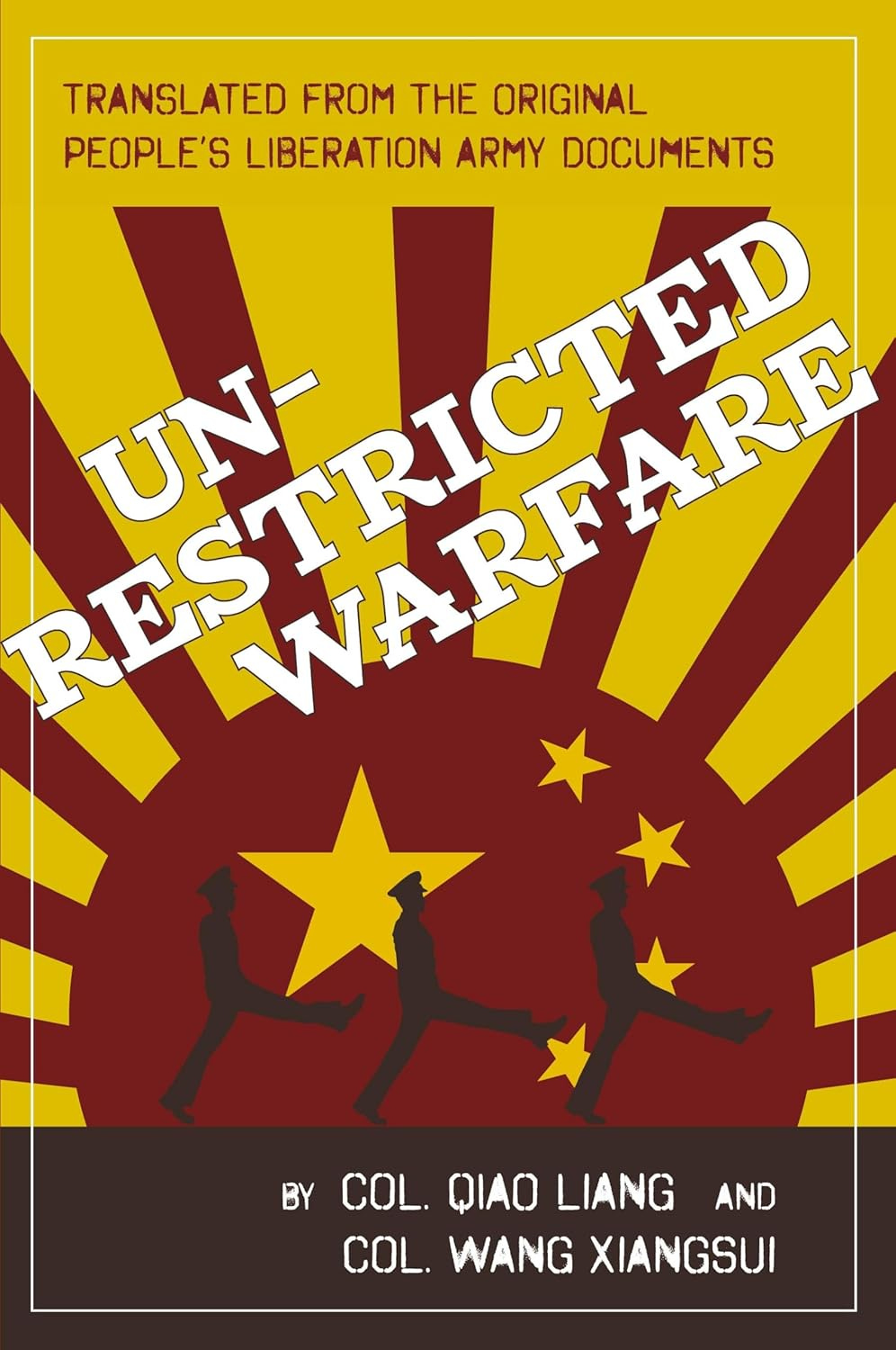
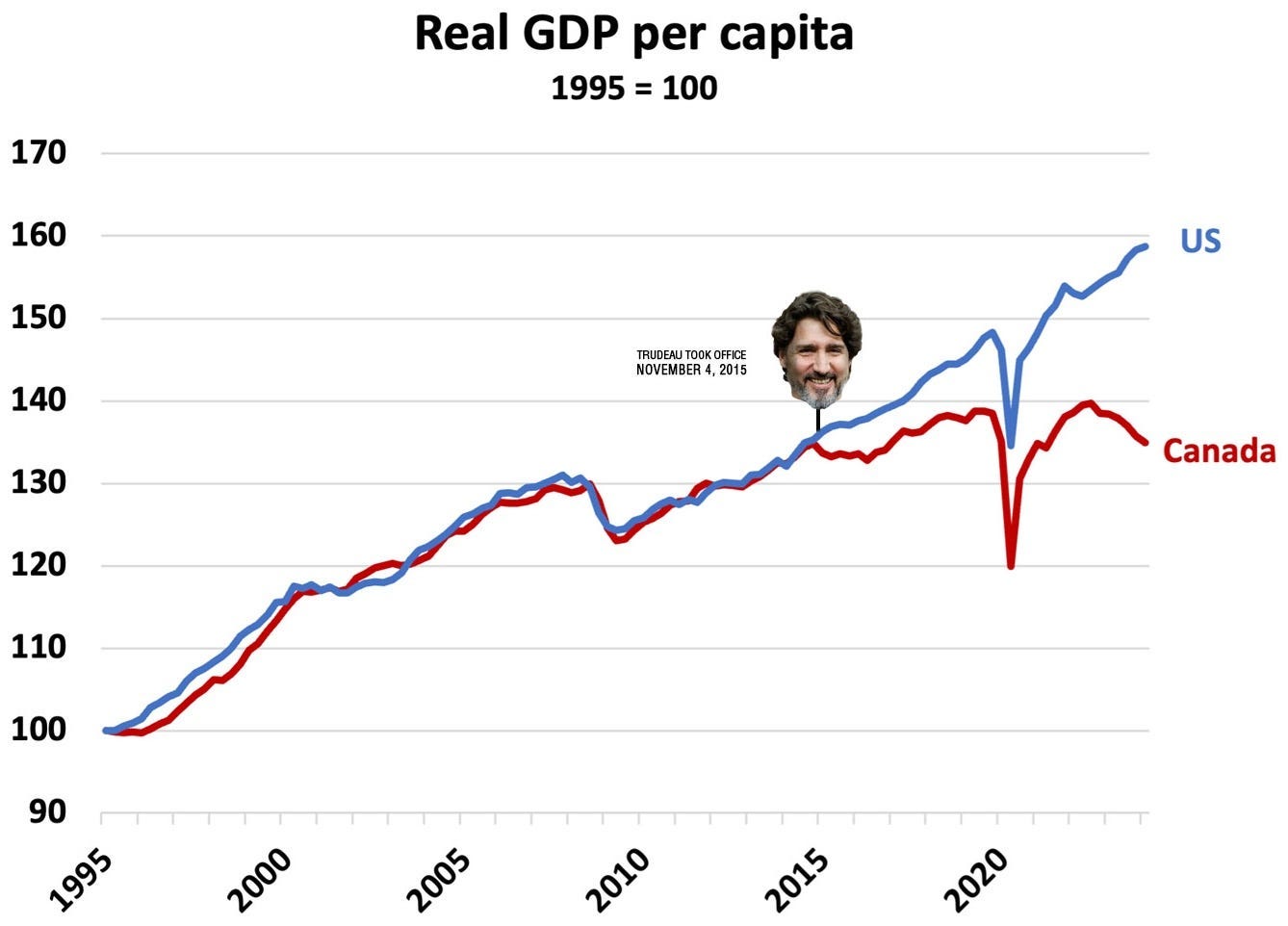

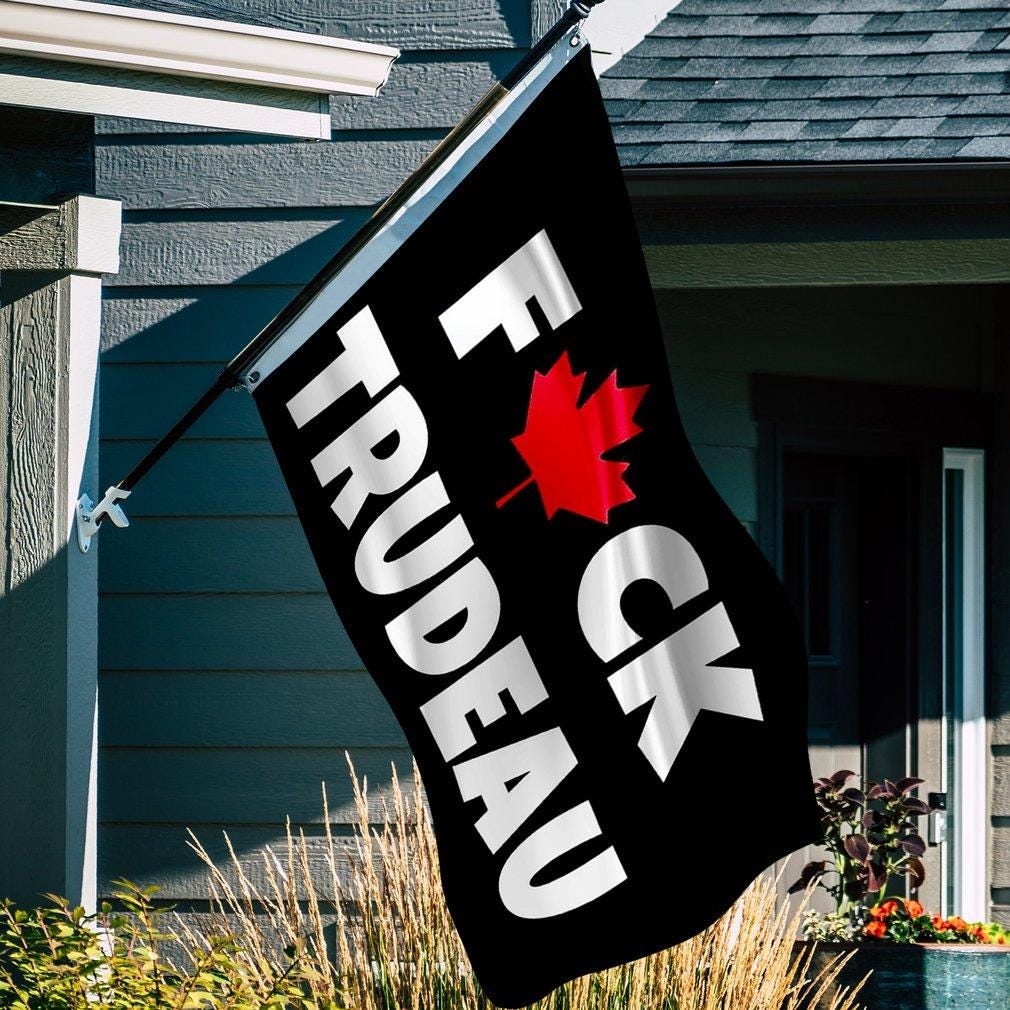
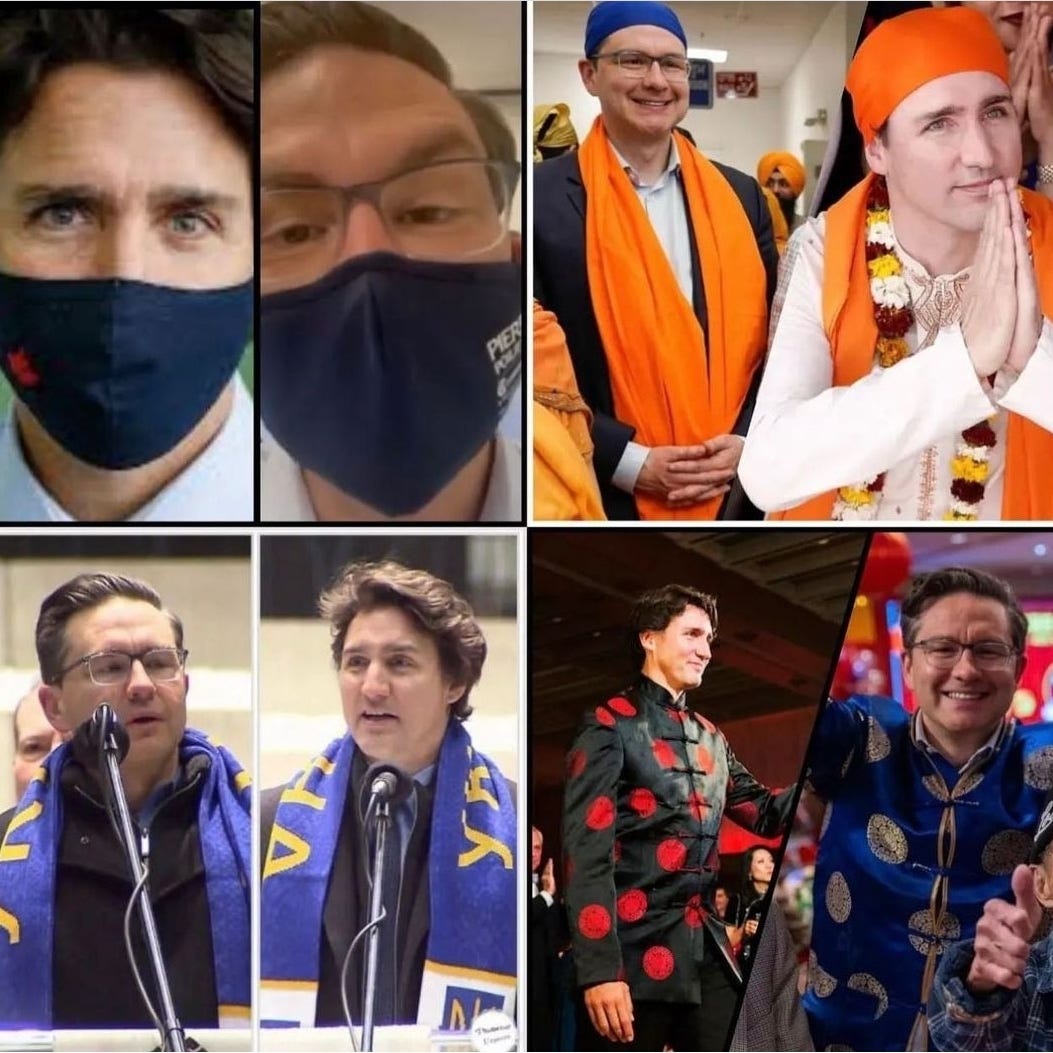
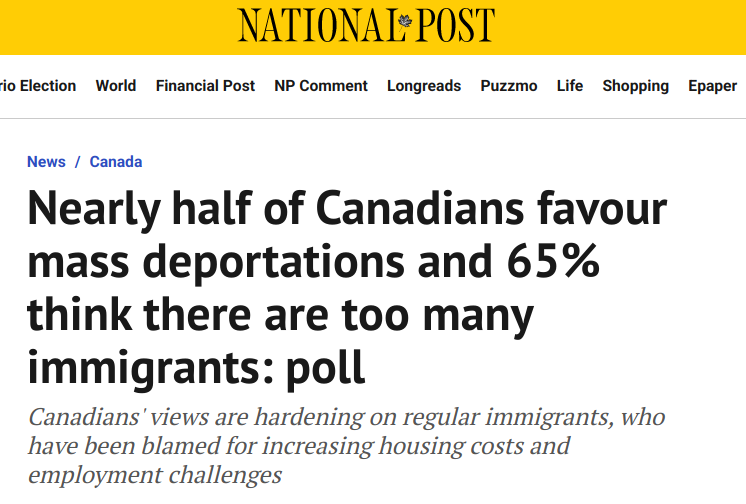


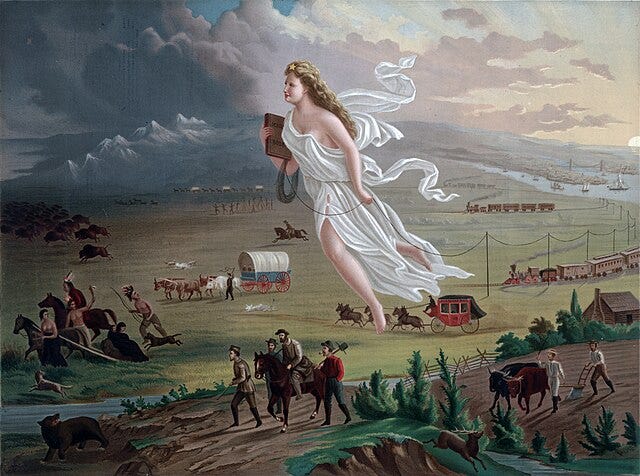
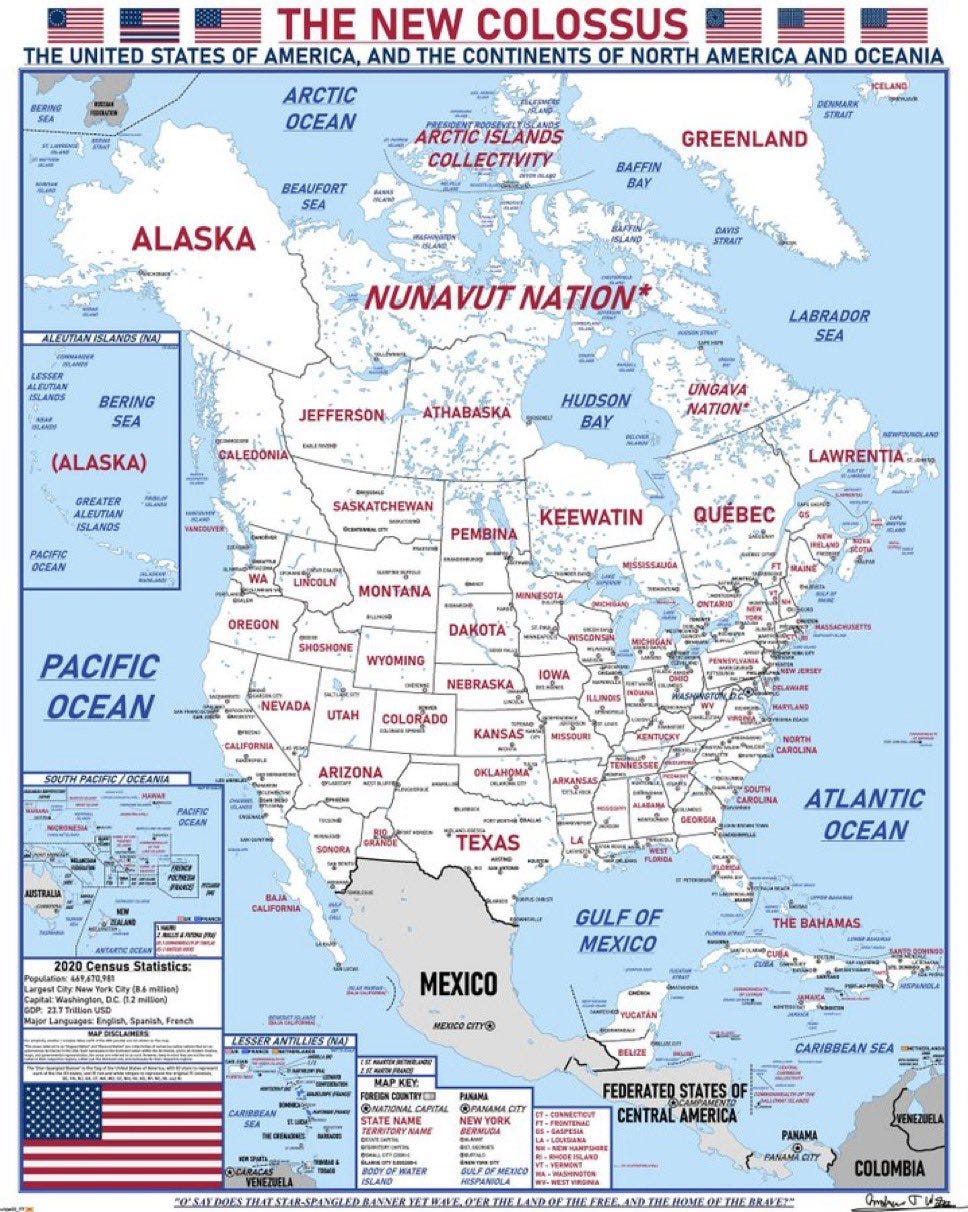
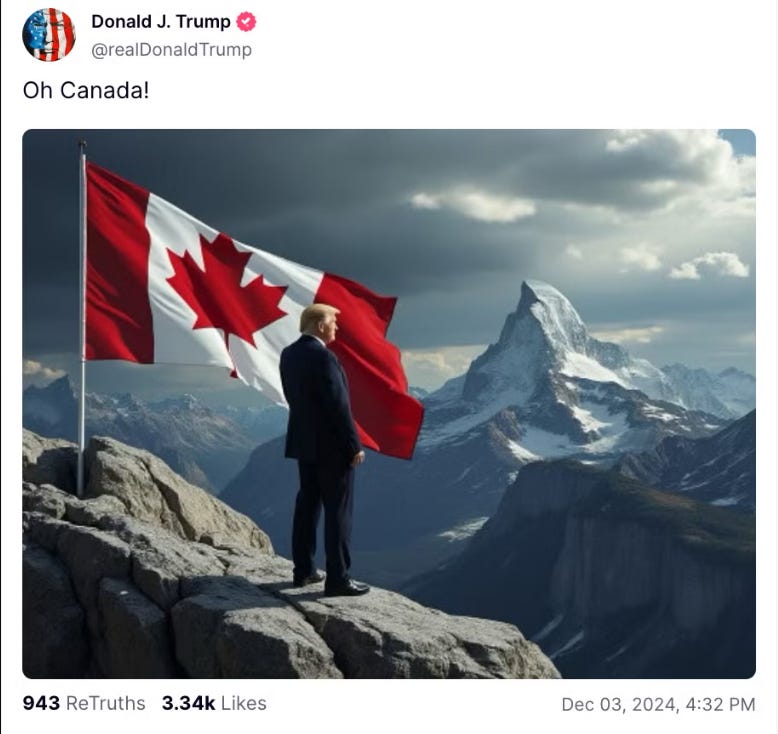
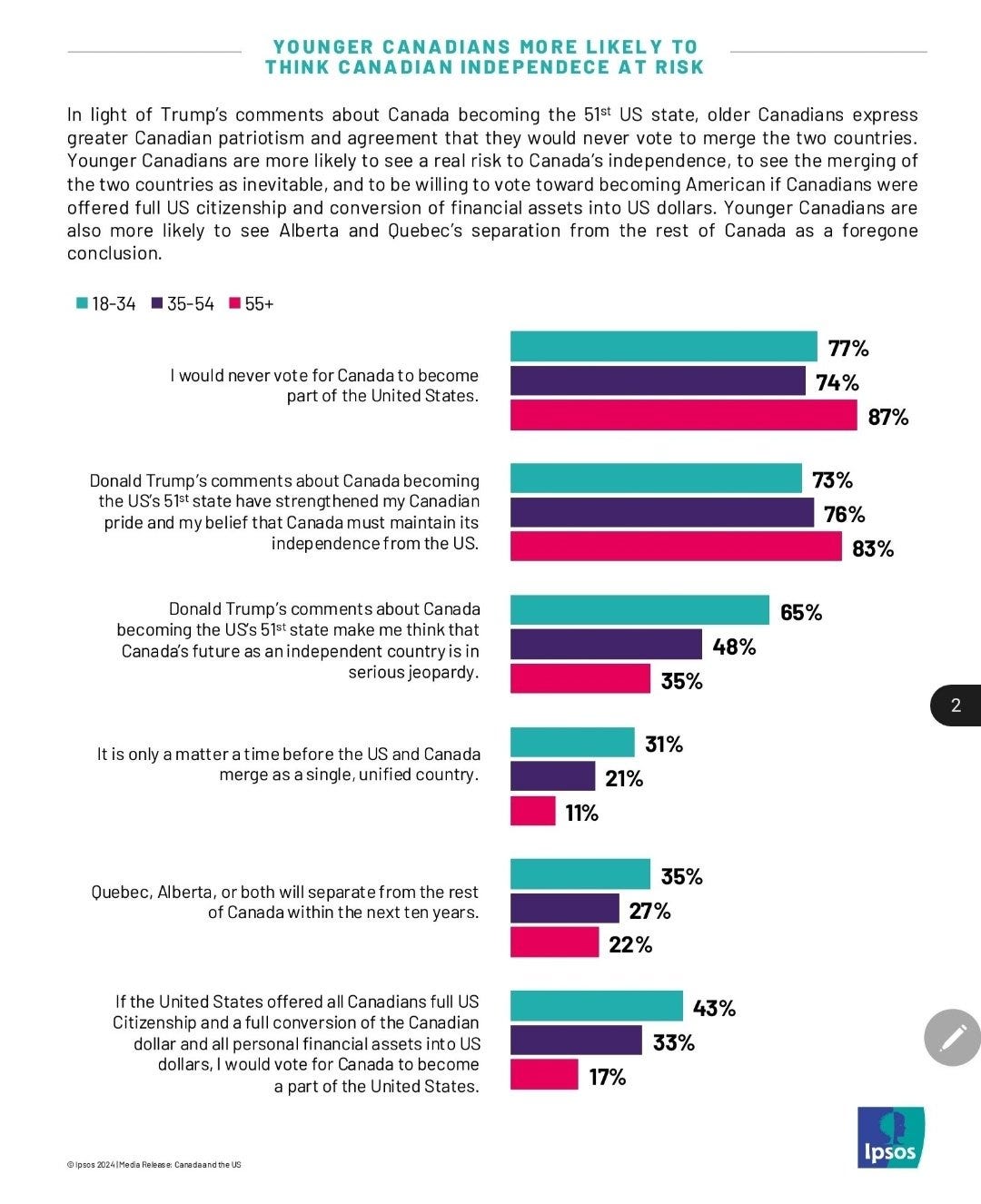
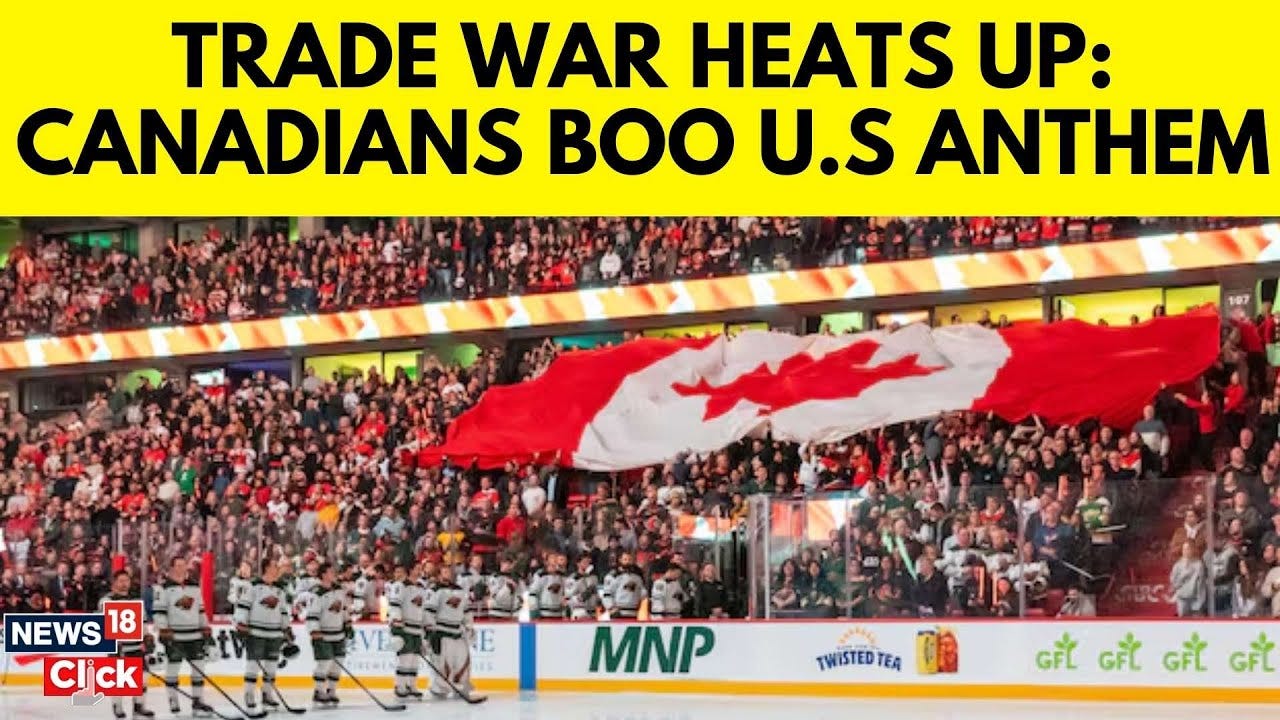
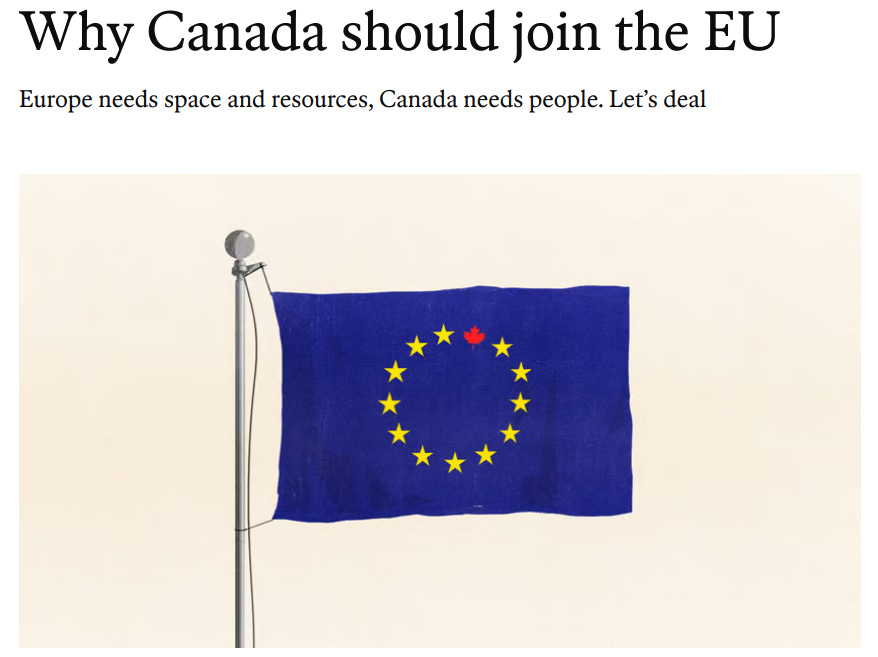
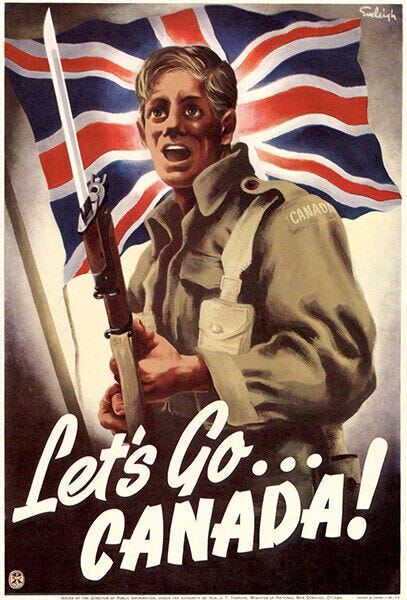
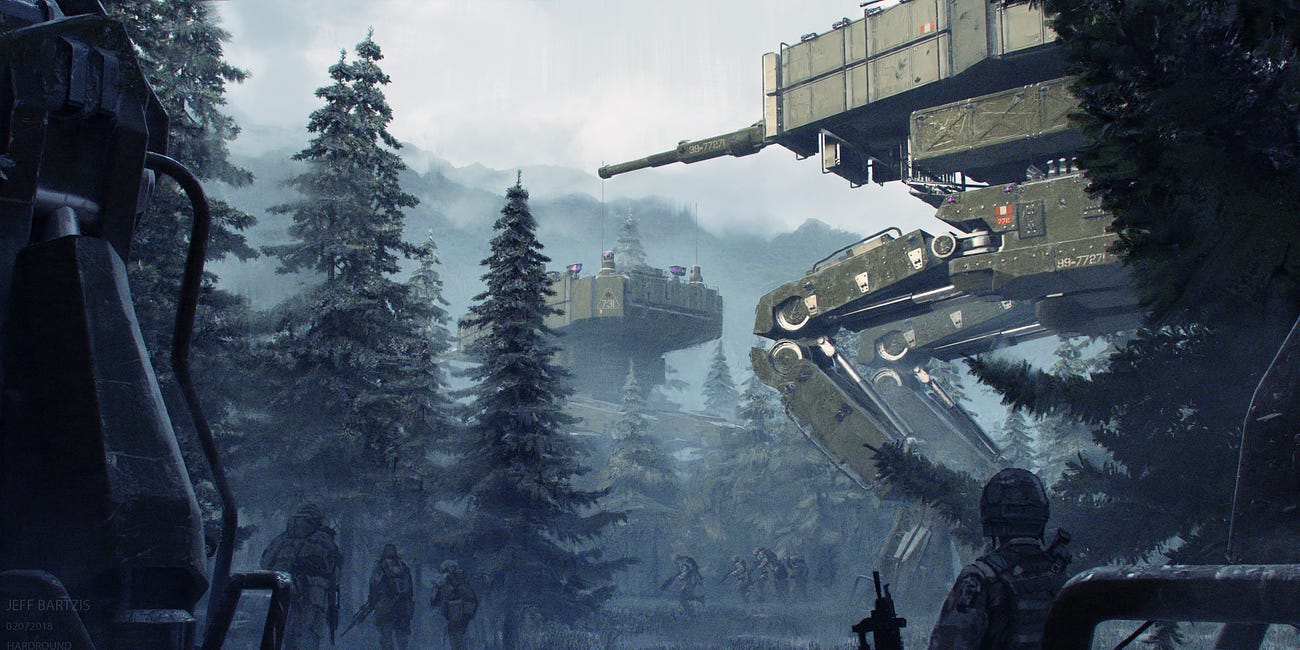
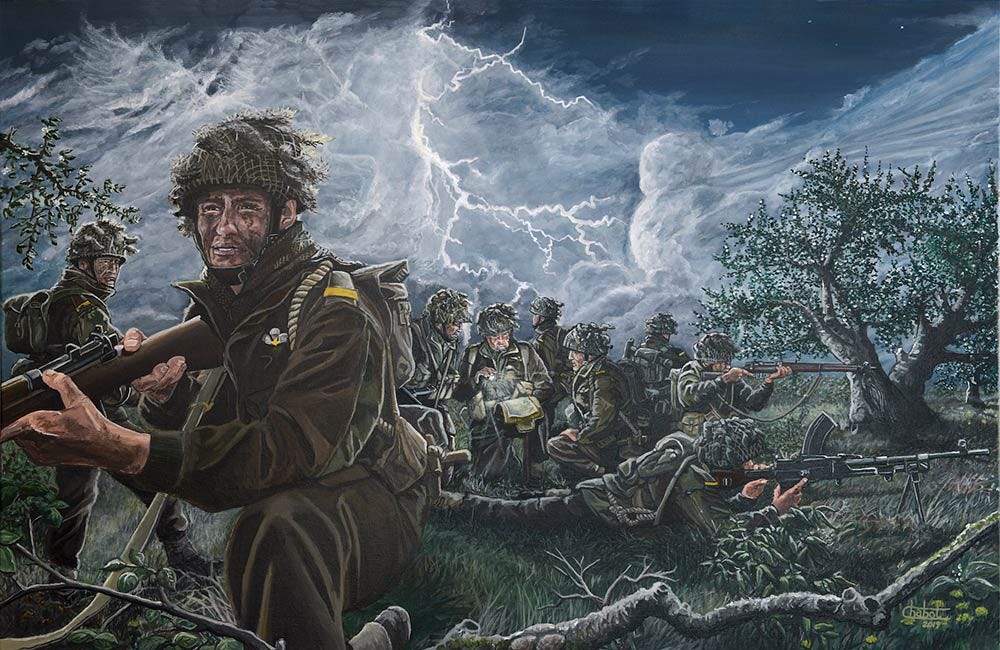
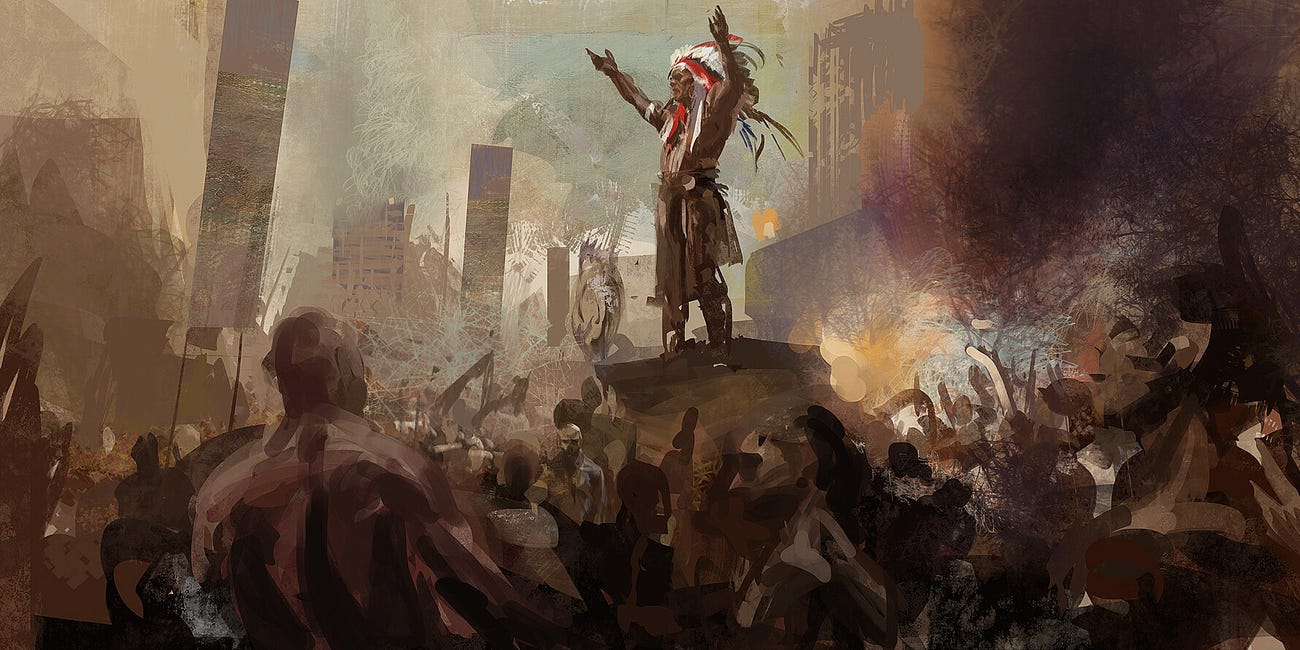
"Enfaggoted" made me laugh - the writing skill displayed here is always a treat.
Canada, along with Germany and the UK are well on their way to becoming countries that suppress free speech much like Russia, Iran and China. We in the US must acknowledge this fact and realize that we can no longer be allies with countries that don’t share our love of freedom.